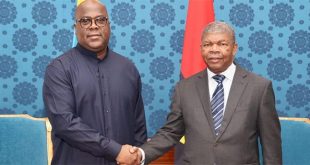
| THE INDEPENDENT | The U.S., through its embassy in the Central African Republic, recently published a warrant offering up to US$5 million for information leading to the capture of Ugandan warlord Joseph Kony. The U.S. had previously announced the bounty in early 2013. It has been on the trail of the Lord’s Resistance Army leader since the early 2000s, spending at least US$800 million on efforts to bring him to book. We asked international justice experts Tonny Kirabira; PhD Candidate in Law, University of Portsmouth, and Leïla Choukroune; Professor of International Law and Director of the University Research and Innovation Theme in Democratic Citizenship, University of Portsmouth, to unpack the renewed interest in the Ugandan fugitive.
What’s the history of the Lord’s Resistance Army?
The Lord’s Resistance Army, a rebel group led by Joseph Kony, launched a war in northern Uganda in 1987. For over two decades, besides massacres and destruction of property, the group systematically targeted and abducted children to become its soldiers and sex slaves. The International Criminal Court issued arrest warrants for Kony and four of his top commanders – Vincent Otti, Raska Lukwiya, Okot Odhiambo and Dominic Ongwen – in 2005.
In 2008, the Ugandan forces and troops from neighbouring countries launched Operation Lightning Thunder, which drove the militants further into the Central African Republic. That’s where Joseph Kony is believed to be stationed.
What has kept this group together?
In the early stages of the war, it was believed that the Sudanese government provided logistical support to the group. At the time, Sudan had accused the Uganda government of supporting rebels in its Darfur region.
The Lord’s Resistance Army also engaged in elephant poaching and illegal ivory trade in the Democratic Republic of Congo, to fund its war.
What’s known about the group’s activities today?
The Lord’s Resistance Army is believed to have fewer than 1,000 fighters, all scattered in splinter groups. There are reports of its atrocities in South Sudan and Central African Republic. Significant reduction in the number of fighters, and deaths of commanders like Otti, Okot and Lukwiya, dismantled the group’s top leadership. In addition, its commander, Ongwen, surrendered to U.S. forces in the Central African Republic in 2015. In 2021, Ongwen was convicted for war crimes and crimes against humanity, and sentenced to 25 years of imprisonment.
Why is the U.S. going for Joseph Kony now?
The U.S. has always maintained a strategic role and responsibility in the efforts to counter Kony’s group. But its recent action – issuing a warrant and providing a WhatsApp number for relaying the information – poses more questions than it offers solutions. Previously, the U.S. put political pressure on the Democratic Republic of Congo to counter the rebel group. The George W. Bush administration provided logistical and intelligence support for the Operation Lightning Thunder in 2008 and 2009.
U.S. civil society has also been active in the efforts to neuter Kony’s group. As a result, President Obama signed the Lord’s Resistance Army Disarmament and Northern Uganda Recovery Act of 2009 in 2010.
In 2011, Obama deployed 100 military advisors in Central African Republic to “enhance regional efforts against the Lord’s Resistance Army”. Succinctly, the deployment was premised on both national security and foreign policy interests of the U.S. While the foreign policy is magnified in the growth of U.S presence and influence in the region, supporting counterinsurgency operations could be critical to national security interests.
But with the reduction in the group’s capacity and threat, the renewed U.S. interest is not clear. Does the move aim to support the International Criminal Court’s mandate, or is it simply a humanitarian intervention for civilians?
Following the conviction of Ongwen in 2021, the US Department of State issued a statement in support of the International Criminal Court’s verdict. The statement noted: “While we continue to believe the court is in need of significant reform, we are pleased to see Ongwen brought to justice”.
It is in this same statement that the U.S. emphasised its goal of hunting down Kony. The US$5 million prize for information leading to “the arrest, transfer, or conviction” of Kony was first announced by the Obama administration in 2013.
Different interpretations can be made from this explicit U.S. interest. The US$5m prize could demonstrate a tacit support of institutions like the International Criminal Court, as alternative avenues for peace and justice.
It is important to note that the U.S is not a state party to the Rome Statute of the International Criminal Court. It has had a fractious relationship with The Hague based court in previous years.
Ultimately, the Biden administration could be viewed as a new chapter in the US – International Criminal Court relationship, albeit under “partial and conditional cooperation”. In essence, such cooperation is only limited to situations where U.S. interests are at stake. Therefore, by placing a prize on Kony’s arrest, the Biden administration could be demonstrating a willingness to assist in the enforcement of an International Criminal Court-sanctioned warrant, in the process offering support to the Court.
But it could be argued that searching for Kony is a U.S. entry point back into the Central African Republic. This is amid the growing influence of Russia in the country. France, the UK and the U.S. accuse Russian paramilitary forces of committing atrocities in the Central African Republic.
From a humanitarian perspective, the U.S. intervention can be founded on a moral imperative to protect civilian victims of the Lord’s Resistance Army. And an external intervention would attain more legitimacy if received as a humanitarian intervention.
****
 The Independent Uganda: You get the Truth we Pay the Price
The Independent Uganda: You get the Truth we Pay the Price


